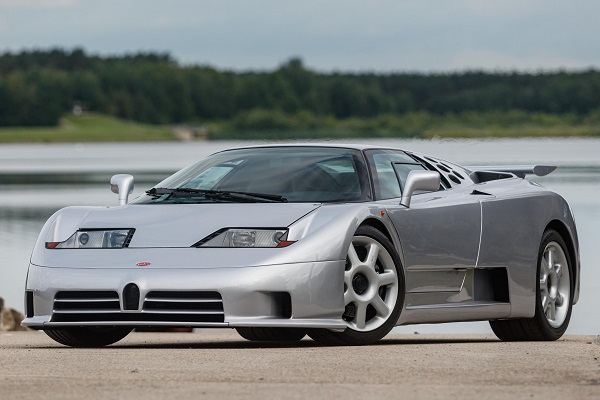25 February 2022
Bugatti was one of the finest car manufacturers of the 1920s and 1930s, but after the death of founder Ettore Bugatti in 1947, the company ceased production. In an attempt to revive Bugatti, Italian entrepreneur Romano Artioli bought the rights to the legendary name. In 1989 he announced the return of Bugatti. Artioli constructed a state of the art factory just north of Modena, Italy.
Expense was not a consideration in designing the new Bugatti; from scratch, one of the most advanced vehicles of its day. Launched on Ettore’s 110th birthday, 15 September 1991 (09-15-1991), the new car was aptly named ‘EB 110’. The launch scene was the Versailles Palace, the former domicile of the French royal family.
The entire body was made of aluminium to save weight. The EB 110 was the first road car to use a monocoque using this exotic material. Due to the complex production process of the composite material, the French aviation company Aerospatiale constructed the tubs.
Four IHI Turbochargers were mated the high revving engine, giving the EB 110 GT an unprecedented output of over 550 bhp.
Complementing the initial EB 110 GT was the EB 110 SS (SuperSport). The SS took the GT’s performance one step further, producing 650 bhp; the SS was a genuine race car for the road. Some styling cues distinguished the GT and SS, most notably the air holes behind the side windows on the SS. Seven spoke alloy wheels replaced the BBS wheels found on the GT.
But this was not the final chapter in Bugatti’s history. In the late 1990s, Volkswagen quickly acquired the rights to the Bugatti. Bugatti showed several concepts on motor shows worldwide, and production started of a new Bugatti. Much in the EB 110’s tradition, the German Bugatti was again the most potent car available.

